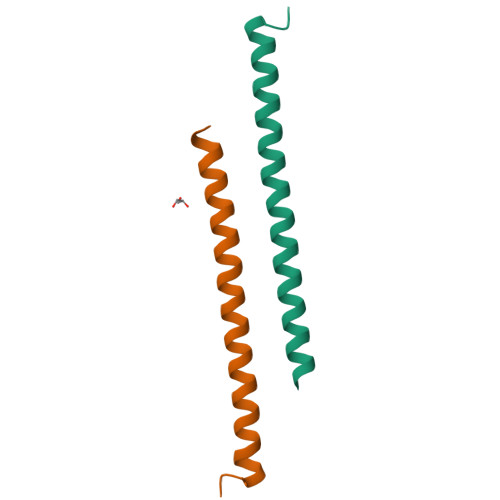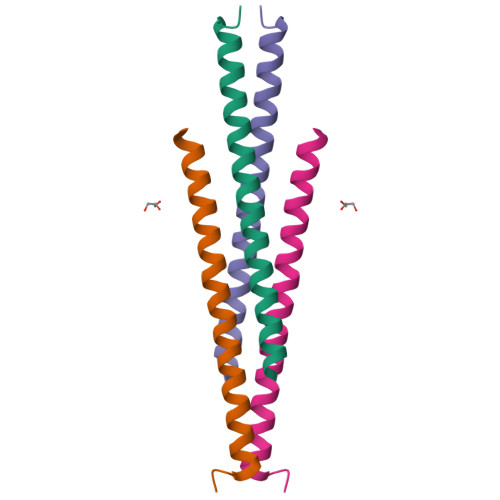Architecture, substructures, and dynamic assembly of STRIPAK complexes in Hippo signaling.
Tang, Y., Chen, M., Zhou, L., Ma, J., Li, Y., Zhang, H., Shi, Z., Xu, Q., Zhang, X., Gao, Z., Zhao, Y., Cheng, Y., Jiao, S., Zhou, Z.(2019) Cell Discov 5: 3-3
- PubMed: 30622739
- DOI: https://doi.org/10.1038/s41421-018-0077-3
- Primary Citation of Related Structures:
6AKK, 6AKL, 6AKM - PubMed Abstract:
Striatin-interacting phosphatases and kinases (STRIPAKs) are evolutionarily conserved supramolecular complexes, which have been implicated in the Hippo signaling pathway. Yet the topological structure and dynamic assembly of STRIPAK complexes remain elusive. Here, we report the overall architecture and substructures of a Hippo kinase-containing STRIPAK complex. PP2Aa/c-bound STRN3 directly contacts the Hippo kinase MST2 and also controls the loading of MST2 via two "arms" in a phosphorylation-dependent manner, one arm being STRIP1 and the other SIKE1-SLMAP. A decreased cell density triggered the dissociation of the STRIP1 arm from STRIPAK, reflecting the dynamic assembly of the complex upon sensing upstream signals. Crystallographic studies defined at atomic resolution the interface between STRN3 and SIKE1, and that between SIKE1 and SLMAP. Disrupting the complex assembly abrogated the regulatory effect of STRIPAK towards Hippo signaling. Collectively, our study revealed a "two-arm" assembly of STRIPAK with context-dependent dynamics, offering a framework for further studies on Hippo signaling and biological processes involving MST kinases.
Organizational Affiliation:
1State Key Laboratory of Cell Biology, CAS Center for Excellence in Molecular Cell Science, Shanghai Institute of Biochemistry and Cell Biology, Chinese Academy of Sciences, University of Chinese Academy of Sciences, Shanghai, 200031 China.



















